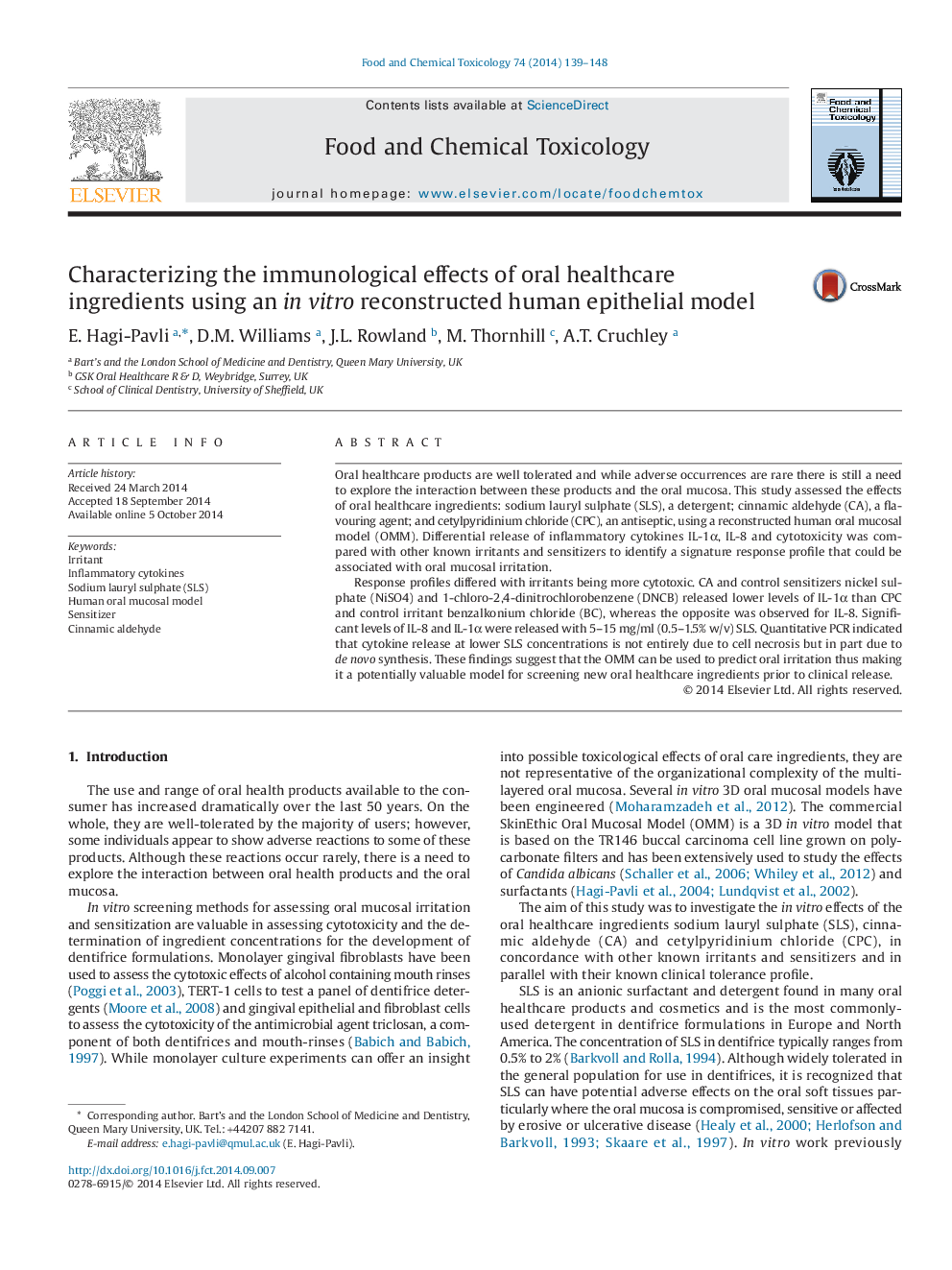| Article ID | Journal | Published Year | Pages | File Type |
|---|---|---|---|---|
| 5849965 | Food and Chemical Toxicology | 2014 | 10 Pages |
Abstract
Response profiles differed with irritants being more cytotoxic. CA and control sensitizers nickel sulphate (NiSO4) and 1-chloro-2,4-dinitrochlorobenzene (DNCB) released lower levels of IL-1α than CPC and control irritant benzalkonium chloride (BC), whereas the opposite was observed for IL-8. Significant levels of IL-8 and IL-1α were released with 5-15âmg/ml (0.5-1.5% w/v) SLS. Quantitative PCR indicated that cytokine release at lower SLS concentrations is not entirely due to cell necrosis but in part due to de novo synthesis. These findings suggest that the OMM can be used to predict oral irritation thus making it a potentially valuable model for screening new oral healthcare ingredients prior to clinical release.
Related Topics
Life Sciences
Agricultural and Biological Sciences
Food Science
Authors
E. Hagi-Pavli, D.M. Williams, J.L. Rowland, M. Thornhill, A.T. Cruchley,
